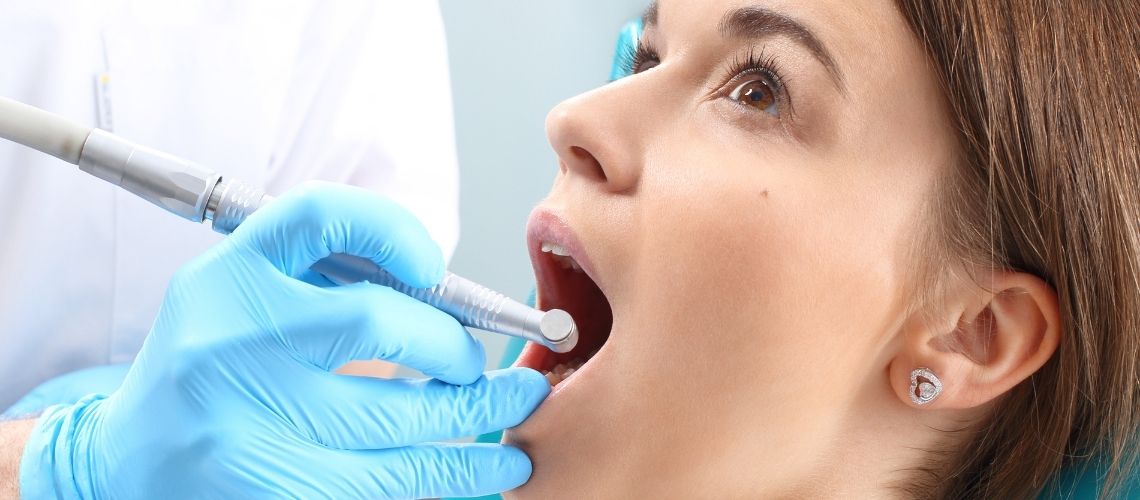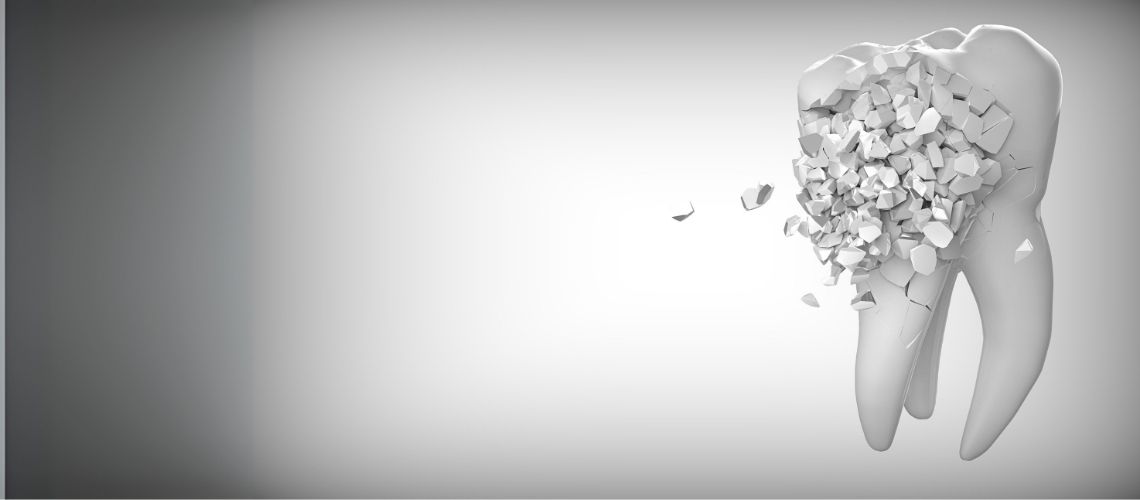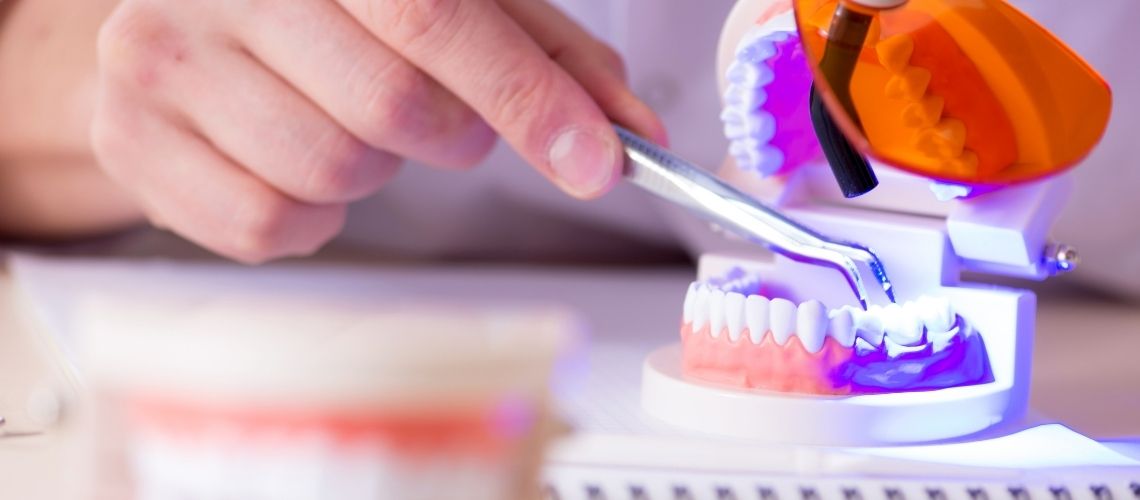A dental abscess often results from tooth decay. This condition arises from infections that start at the root of the tooth and concentrate in areas called periapical regions. Typically, poor oral hygiene, trauma, or failed root canal treatments are the triggers. Moreover, these infections can cause severe pain if untreated. Additionally, they pose a risk of leading to serious health problems. Therefore, early diagnosis and proper treatment of a dental abscess are of great importance.
Causes of Dental Abscess: Risk Factors and Triggers
A dental abscess is a common oral health problem that requires urgent intervention. The main causes are usually tooth decay, dental trauma, and poor oral hygiene. The degradation of tooth enamel allows bacteria present in the mouth and throat to enter the inner part of the tooth, the pulp chamber. This leads to a local infection, and as the infection gets trapped inside the tooth, it causes severe pain.
As the infection progresses, it can spread along the root canal and move towards the lower or upper jaw, depending on the location of the tooth. The triggers for dental abscesses include:
- Tooth decay and poor oral hygiene
- Dental trauma
- Failed root canal treatment
Additionally, some genetic and health conditions can also increase susceptibility to dental abscesses:
- Genetic conditions such as amelogenesis imperfecta
- Diseases like Sjögren’s syndrome that cause dry mouth
- Teeth grinding and other mechanical factors
Exposure to chemicals or conditions and treatments that affect the immune system also increase the risk:
- Methamphetamine smoke and other chemical irritants
- Conditions that suppress the immune system, such as chemotherapy and HIV/AIDS
Each of these factors increases the risk of a dental abscess, highlighting the need for urgent and effective treatment. A dental abscess is not just a local issue; if it progresses, it can threaten overall health.
Prevalence and Impact of Dental Abscess
Dental health issues, particularly tooth decay, are a widespread public health problem. The National Health and Nutrition Examination Survey has shown that a large majority of adults have tooth decay. Untreated tooth decay, in particular, can lead to serious problems. Statistics can be specified as follows:
- 27% of adults aged 20-64 have untreated tooth decay.
- This rate rises to 36% among Hispanics and 42% among non-Hispanic blacks.
- Among adults over 65, the rate of untreated tooth decay is 19%.
Dental infections, especially dental abscesses, are a significant cause of emergency room visits. In pediatric emergency room visits, the rate of dental abscesses is 47%. This shows not only the prevalence of dental health issues but also the need for urgent medical intervention. Having healthy teeth in people has a direct impact on health services in society.
Formation Process and Effects of Dental Abscess
A dental abscess is a severe infection that progresses to the deepest layers of the tooth. The infection usually starts due to tooth decay or gum disease. It first erodes the enamel and then reaches the underlying dentin layer. As the infection progresses, it reaches the pulp chamber of the tooth. This chamber contains nerves and blood vessels, which cause severe pain.
The infection has a high potential for spreading and can lead to the following effects:
- Swelling and tenderness of the gums
- Increased pain during swallowing or chewing
- Difficulty opening the mouth
If such an infection is not treated, it can spread to the jawbone and even other parts of the neck. This spread can cause severe complications and, in rare cases, life-threatening health problems.
Symptoms and Clinical Findings of Dental Abscess
A dental abscess presents with some clear clinical findings. Patients usually report severe pain. This pain is localized around the tooth and may worsen with palpation. Infected teeth are associated with poor oral hygiene and a lack of regular dentist visits. Moreover, the patient may report having had untreated dental trauma in the past. During the dental examination, the following observations can be made:
- Discolored tooth or teeth
- Visible cracks on the enamel
- Redness and swelling of the gums
On the other hand, signs such as facial redness, trismus, and dysphagia may also be observed. Fever and lymphadenopathy indicate the systemic effects of the infection. Changes in mental status and shortness of breath indicate more severe conditions and require urgent intervention.
How is Dental Abscess Diagnosed?
The first step in diagnosing a dental abscess is usually a head and neck x-ray. This x-ray shows whether the trachea is compressed or displaced. It can also detect subcutaneous air from necrotic tissue. Next, a complete blood count is performed to assess the presence and spread of the infection. This test examines the number and types of white blood cells, which are signs of an infectious condition. Especially neutrophils, which are white blood cells that fight bacterial infections. An increase in these cells indicates an infection.
If more detailed imaging is needed, the following techniques are used:
- CT and MRI scans
- These techniques are used to more clearly observe any ascending infections in the sinus cavities.
These detailed examinations help accurately diagnose a dental abscess.
Treatment Methods and Medications
The first step is to drain the pus that has accumulated at the root of the infected tooth. This procedure usually requires urgent intervention and quickly relieves the patient’s pain. Then, antibiotic treatment is initiated to prevent further spread of the infection. Antibiotics fight the bacteria causing the infection and help control the infection. Additionally, analgesics are prescribed for pain management, which speeds up the patient’s recovery process. The choice of antibiotics depends on the severity of the infection and the patient’s health condition.
Resistance to antibiotics can limit treatment options. Therefore, doctors need to evaluate alternative antibiotics that will be effective for the patient. Stronger antibiotics may be required for severe infections or patients with weakened immune systems. In such cases, broad-spectrum antibiotics are used.
Other Important Oral Health Issues
While dealing with dental abscess and its complications, other oral health issues should not be overlooked. These health issues can sometimes present similar symptoms and must be carefully examined for a correct diagnosis. Early detection of these issues allows for an effective treatment plan to be made.
- Buccal bifurcation cyst
- Eosinophilic granuloma
- Gingival abscess
- Langerhans cell histiocytosis
- Lateral periodontal cyst
- Osteomyelitis
- Periapical abscess
- Peritonsillar abscess
- Periapical granuloma or cyst
- Vertical root fracture
Each condition requires specific treatment methods, and therefore a detailed examination is essential. This prevents misdiagnoses and treatments.
Possible Outcomes of Dental Abscess
Timely and effective treatment of a dental abscess usually yields good results. However, untreated cases can lead to severe complications. Firstly, the infection can progress downward and cause mediastinitis. This condition can increase the mortality rate up to 40%. The infection can block the airways, requiring serious interventions. Moreover, infections that ascend through the sinuses or travel through the bloodstream to the brain further increase the risk of death. These dangerous outcomes include:
- Mediastinitis
- Airway blockage
- Spread of the infection to the brain
Therefore, early diagnosis and appropriate treatment of a dental abscess are vital.
Frequently Asked Questions
How can you tell if a tooth has an abscess?
To determine if a tooth has an abscess, certain symptoms can be observed. Intense pain is felt in the tooth or gum, and this pain can spread to the jawbone, neck, or ear. Additionally, redness and swelling occur in the infected area. Patients experience pain while chewing and may have difficulty opening their mouths. The affected tooth root becomes sensitive, which manifests as increased sensitivity to hot or cold foods. The presence of an infection can also cause a bad taste and odor.
Can a tooth abscess heal on its own?
A tooth abscess does not heal on its own. Although the drainage of pus may provide temporary relief, this is misleading. True healing requires the intervention of a dentist. Otherwise, the abscess may recur and lead to more serious health problems. Therefore, when a tooth abscess is detected, it is best to see a dentist as soon as possible. Early intervention in such health issues prevents larger complications in the future.
What can a tooth abscess lead to?
If left untreated, a tooth abscess can lead to serious health problems. The infection can spread from the surrounding tissues of the tooth to the jaw and neck, causing increased pain and discomfort. Additionally, the abscess can spread throughout the body, leading to life-threatening infections such as sepsis. Sepsis is known as an excessive reaction of the body to an infection, resulting in damage to vital organs. Therefore, it is necessary to treat a tooth abscess quickly and effectively.
Should you brush a tooth with an abscess?
A tooth with an abscess should be brushed. This process reduces the bacterial load in the mouth and prevents the spread of infection. Therefore, regularly cleaning the infected tooth contributes to maintaining oral health. In addition to brushing, using an antiseptic mouthwash is also an effective method in fighting the infection. This helps keep the gums healthier and reduces the risk of the infection spreading to other teeth.
What happens if a tooth abscess bursts?
When a tooth abscess bursts, the person may experience a bad taste in the mouth. This usually occurs due to the release of pus and bacteria accumulated within the abscess. When the abscess bursts, the pain may initially decrease. However, this does not mean that the infection is cured. A burst abscess can cause bacteria to spread to the gum tissue and surrounding tissues. These bacteria can even enter the bloodstream, leading to more serious health problems. Therefore, appropriate treatment by a dentist should be performed after an abscess bursts.
What helps a tooth abscess at home?
There are some alternative natural methods that can be used at home for treating a tooth abscess. A saltwater rinse can help cleanse the infection. Baking soda, with its antibacterial properties, can reduce pain and inflammation. Oregano oil, with its strong antibacterial and antioxidant effects, can help fight the infection. Applying a cold compress can relieve swelling and pain.
How can you tell if a tooth has an abscess?
A tooth with an abscess can manifest through various symptoms. First, the tooth becomes extremely sensitive during chewing and biting. Additionally, the tooth becomes sensitive to hot and cold foods or drinks. Over time, the lymph nodes in the jaw and neck may swell, indicating that the infection is spreading. Swelling typically becomes more noticeable on the affected side of the face. If the abscess bursts, the person may experience a bad taste in the mouth, usually accompanied by drainage. These symptoms are critical in identifying a tooth with an abscess.
Does a tooth abscess cause sleep problems?
A tooth abscess can cause sleep disturbances due to pain and infection. This is because increased sensitivity in the gums and surrounding areas prevents the person from getting comfortable sleep. Pain caused by a tooth abscess typically increases during the night, frequently interrupting sleep and preventing deep sleep stages. Additionally, as the infection spreads and worsens, a general sense of discomfort may also negatively affect the person’s sleep pattern.
Can dental work be done on a tooth with an abscess?
Whether dental work can be performed on a tooth with an abscess depends on the severity of the situation. The infection must first be brought under control. Typically, the doctor will begin antibiotic treatment. This treatment aims to reduce the risk of the infection spreading. After the use of antibiotics, if necessary, a root canal treatment can be performed on the tooth. However, it is important that the situation be evaluated by a specialist dentist in any case. The treatment process is planned based on the condition of the tooth and the risk of infection spreading.
What should I do if my face swells due to a tooth abscess?
When a tooth abscess occurs and the face swells, rinsing with salt water can help relieve the pain. Additionally, applying a cold compress can reduce the swelling; an ice pack can be wrapped in a cloth and placed on the swollen area. However, these methods provide temporary relief; therefore, it is essential to see a dentist for a permanent solution. The dentist can drain the abscess if necessary and apply appropriate treatment methods to resolve the issue thoroughly.
When does a tooth abscess become dangerous?
A tooth abscess becomes dangerous when left untreated. Initially, the infection is localized to the tooth and gums, but over time it can spread, leading to broader health issues. Specifically, the infection entering the bloodstream can affect vital organs. This can lead to life-threatening conditions such as sepsis. Therefore, a tooth abscess should be treated quickly once symptoms start. Delaying treatment can lead to severe complications, including the spread of infection to other parts of the body and even death.

Dentist Handan Nohutcuoğlu graduated from Ege University Faculty of Dentistry in 1987. He has gained experience in various fields by working in many dental polyclinics throughout his career, combining his knowledge and experience. He continues to work at Hollywood Dental at the moment.









